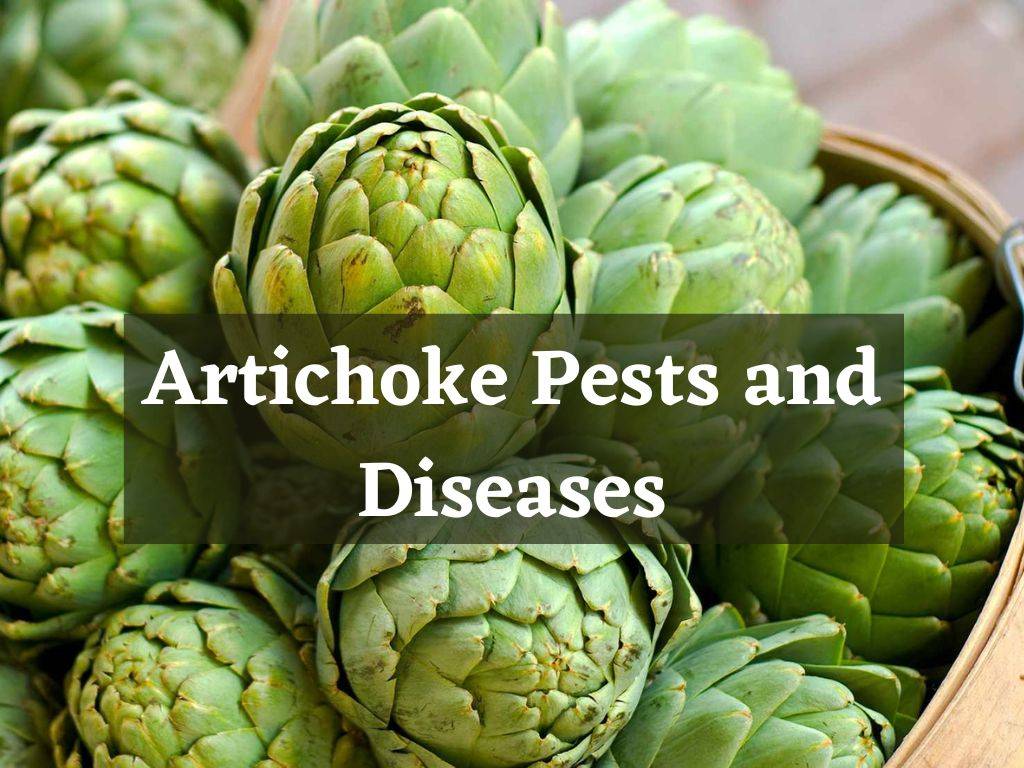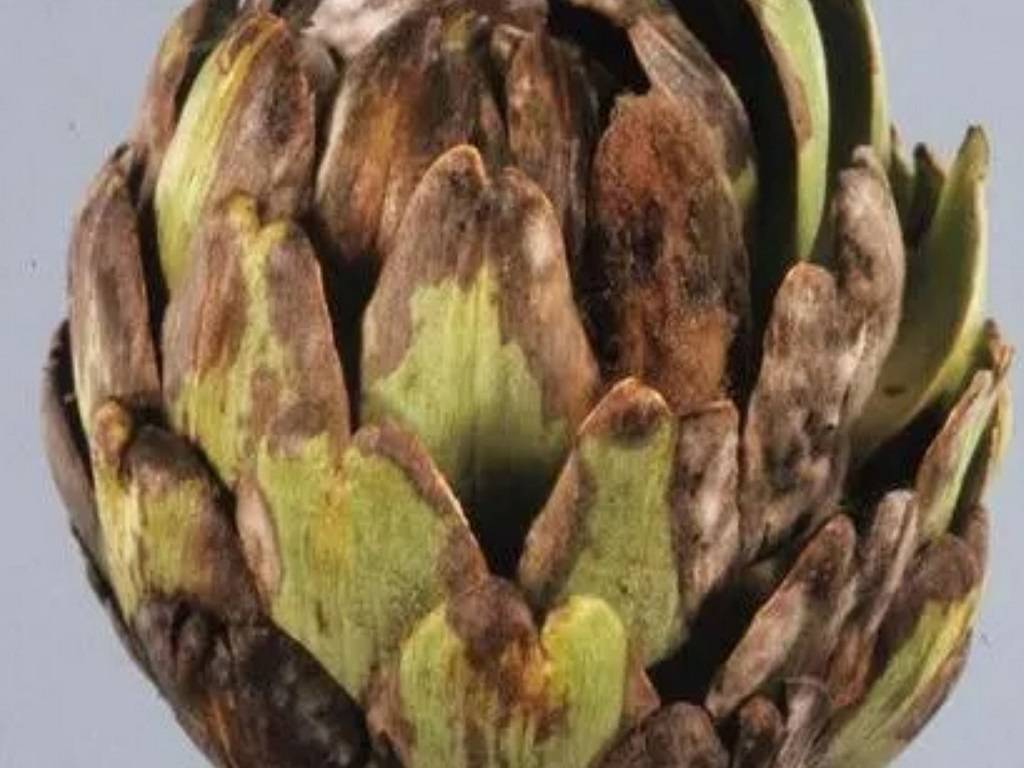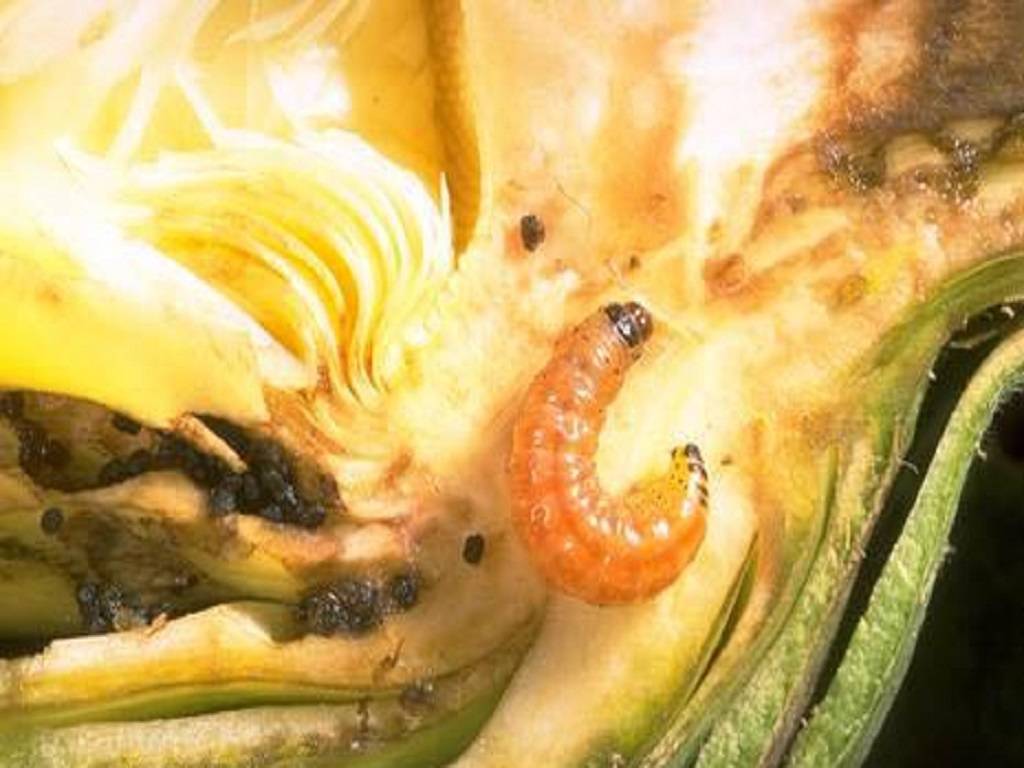
An ancient-looking plant called artichoke produces tasty globes and unusual purple blooms in addition to stirring up the visuals in the garden. The plants grow enormously fast and are quite simple to cultivate. When cultivating artichoke plants, you could occasionally face a few complications, and plants that are being attacked might have pest or disease concerns.
Learn how to identify pests that affect artichokes, how to deal with them, and how to take care of infected artichokes.
Artichoke Diseases and Pest Management
1. Gray Mold (Botrytis Rot)
Crop failure (ineffective output) is a result of this fungus disease, Botrytis cinerea, in some regions. The pathogen can effectively infect plants with damaged tissue from frost, pests, or improper handling and is preferred by high humidity and warm weather (moderate temperature) (mechanical damage). The entire plant will wilt, and the majority of the diseased areas are coated in a white-to-gray mold, which farmers can see. Crowns have a rotten odor and become liquid and soft.
Management:
The first step in managing a disease is to take the appropriate safety precautions. These include preventing foliar wetness, maintaining safe plant spacing, improving soil drainage, and controlling weeds. The overall health of the plants (nutrient content, water content, and exposure to sunlight) can help increase their resistance to the disease.

Additionally, all diseased heads should be cut off and discarded, and the remaining collected buds should be preserved in a suitable environment (cooling). Only when a problem is serious and always under the guidance of a local qualified agronomist are chemical treatments (fungicides) utilized. It is essential to practice good sanitation and disinfect your instruments when transferring from one plant or field to another during harvesting and propagation.
2. Bacterial Crown Rot
The disease is caused by the fungus Erwinia chrysanthemi, and some typical signs of crop infection include wilting older and younger leaves, particularly on days with high temperatures. The farmer can also notice black staining on the stems. Additionally impacted, the crown tissue begins to deteriorate and sporadically rots and collapses. The entire plant grows more slowly overall, and at the height of the illness, it completely collapses.
Management:
To stop the spread of the infection, the major control method is to utilize healthy propagation material and clean your instruments before moving from one plant or field to another, during harvesting, and during propagation.
3. Aphids
When aphids are present in large populations, artichoke leaves curl, become yellow, and the plants exhibit stunted growth, which leads to the development of underdeveloped or malformed artichoke buds. Furthermore, bud stalks deteriorate and lose their ability to sustain the weight of growing buds, leading them to droop. Additionally, aphid bodies get infected with buds that are about to be harvested.
In addition to the harm caused by direct feeding, the artichoke aphid is known for secreting a large amount of honeydew, which is deposited on leaves and budding artichoke buds in the lower canopy, giving them a glossy and moist look. Sooty mold develops as a result of honeydew deposits on the leaves, covering the leaf surface and obstructing photosynthesis.
Management:
When the average humidity and air temperature are high in the summer, artichoke aphid is a severe issue for perennial artichokes. Take into account the effects of the materials on this aphid's natural enemies while selecting pesticide treatments to manage other pests. When the environment is favorable for population growth, evaluate the crop every week to see whether treatment is necessary.

4. Slugs and Snails
On perennial artichokes, slugs and snails are a big problem, especially in the winter. Both juveniles and adults consume every component of the plant. Slugs that feed on foliage in densely infected fields leave shot holes in the leaf lamina. Slug damage to buds is most severe when they remove delicate tissues from artichoke bracts. Later, this damage turns black, significantly lowering the quality and marketability of the damaged goods.
Management:
Important procedures for managing snail and slug populations include weed removal and the use of bait.
5. Armyworms
Beet armyworm arises in perennial cropping systems in the summer when the adults transfer into artichokes from other crops. Heavy feeding damage to a plant's growth point leads it to create callus tissue instead of the usual new young leaves and flower stalks. Plants with this condition can appear to have regular leaves on the exterior but merely a ball of undifferentiated tissue in the core, close to the root. The deformed tissue cannot produce new artichoke buds or leaves. 3 to 5% of the falling output can be harmed. Larvae feed on the leaves and flower head bracts of older plants. Chewing on leaves often doesn't have a negative economic impact, but feeding on bracts will cause heads to be removed.

Management:
Armyworms can be controlled organically by the use of Bacillus thuringiensis and by biological control by natural enemies that parasitize the larvae. While there are chemicals available for commercial management, many of them are ineffective against the larvae in home gardens.
6. Artichoke Plume Moth
Although plume larvae will destroy any part of the plant, economic harm is caused when they consume the flower buds and make them unusable. When larvae feed on growing plant shoots, plants might occasionally suffer harm; nevertheless, injured shoots frequently recover. Additionally, larvae have been seen to dig through the soil's top. Infested crowns will soon establish themselves in the newly planted field if they are employed for vegetative propagation.

Management:
The artichoke plume moth is largely an issue where artichokes are cultivated as perennials. In well-established perennial artichoke fields, the artichoke plume moth is managed over the course of two phases using various management strategies. The summer (from stalk cutback through September) and the winter ditch seasons are the two times (from September to Can).
Apply Bacillus thuringiensis or pesticide; remove all infected buds from the plant at harvest; cut plant stems above ground; shred plant material, and integrate into the soil. Applications of insecticides during the winter season must be made by aircraft. Pheromone trap catches and field observations help assess the need for therapy.












